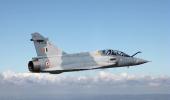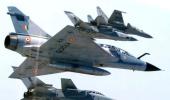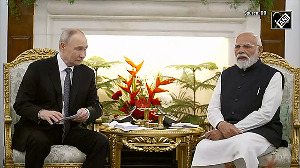'Wing Commander Abhinandan would not have even worried if he was going to cross the LoC or not because he was not going to let go of a shot.'
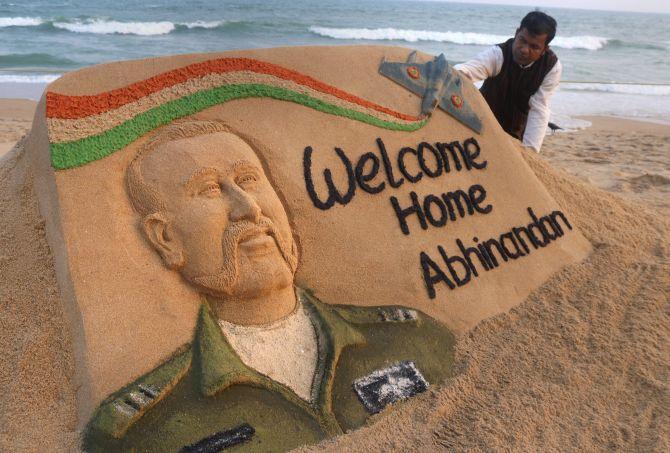
Air Vice Marshal Arjun Subramanian (retd) has flown both the MiG-21 and Mirage 2000 fighter aircraft.
The fighter pilot served the Indian Air Force for 36 years and is an erudite and scholarly voice on strategic affairs.
The author of three books, Air Vice Marshal Subramanian is a visiting professor at Ashoka University and the Jindal School of International Affairs. He was formerly a visiting professor at the Fletcher School of Diplomacy and a visiting fellow at Harvard, Oxford and Northeastern Universities.
The pilot-scholar-commentator spoke to Rediff.com's Archana Masih about the impact of the IAF's daring missions last week. The first of a two-part interview:
As a fighter pilot yourself who has flown the MiG-21, what are your thoughts about Wing Commander Abhinandan's mission?
His mission was very clear. A pilot on an Operational Ready Platform is scrambled when there is an imminent threat. His job is to ensure that that imminent threat does not materialise into an actual threat.
That is what he did.
He was on an air defence mission, the task of an air defence mission pilot is to shoot down an enemy strike or air defence aircraft if it ingresses into Indian space and threatens targets.
We have shot down an aircraft even during peace, two months after the Kargil war.
Flight Lieutenant Prashant Bundela in a MiG-21 Bison shot down an Atlantique aircraft of the Pakistan air force because it strayed into Indian airspace and refused to go back.
(The officer won a gallantry medal, but unfortunately in 2002, Squadron Leader Bundela's MiG-21 crashed. He died four months later from spinal injuries sustained on ejection.)
Why did the aircraft not go back? Because he may have thought that the IAF would not call the bluff and shoot it down.
Similarly, the F-16 pilot would have thought that it has just made an ingress and his own radar probably told him to turn back, but he did not anticipate the Indians would scramble the fighters so fast and create a situation where he would have the threat of being shot down.
It was a clear-cut mission where the pilot had a task. He has been trained for it and has executed it with professionalism.
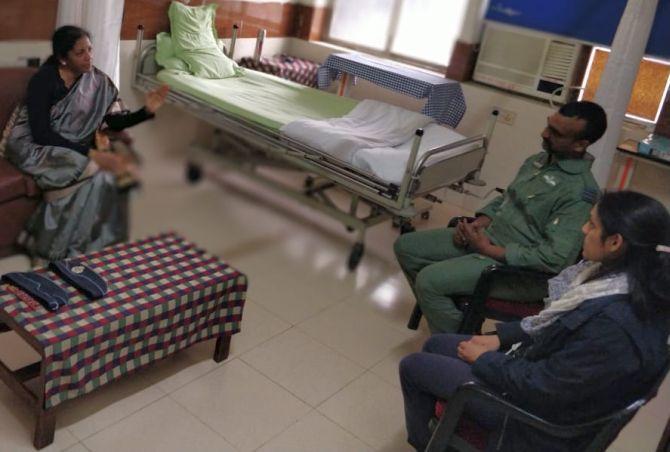
Since his return, what would be some of the procedures Wing Commander Abhinandan must be going through now and for the next few days?
He would be medically assessed. Having gone through an ejection the doctors would particularly examine his spine. The spine takes the biggest load during an ejection.
There will be psychological tests, multiple debriefs and an assessment -- if he is ok, he should be back in a cockpit pretty soon.
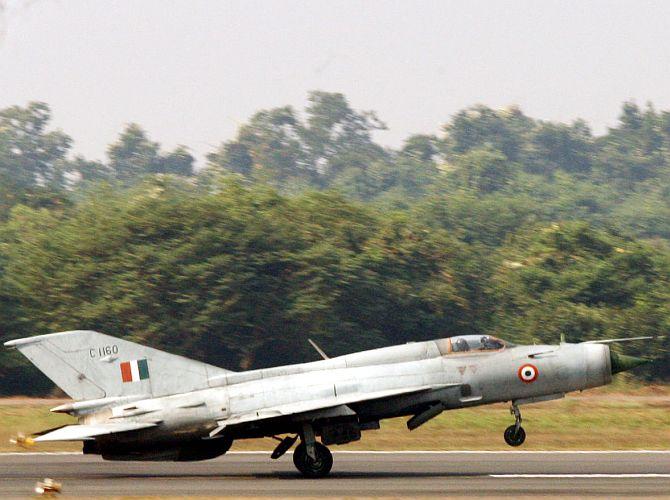
How did an aircraft that the IAF plans to phase out this year best a superior aircraft like the F-16?
There are a number of factors that lead to this kind of situation. In history, we have had David besting Goliath.
It is about tactics, the aggressiveness in the mind of the fighter pilot, how much help the pilot gets from his ground control -- from the fighter controller who is vectoring him on to the package.
It is not just the MiG-21 vs the F-16, it is the environment, training, the pilot and the ability to take an opportunity shot.
That is what Abhinandan has done -- he has guided on to the package very well, has locked on and has pressed on with the attack which clearly indicates him as a typically aggressive fighter pilot.
We understand that 24 Pakistani aircraft were deployed and 8 Indian aircraft responded. To lay people like us it looks like an unequal fight, can you please explain?
It doesn't work that way. Let us hypothetically assume that there were 24 aircraft.
All these 24 aircraft are not equipped with bombs to drop on a target.
There will be 1/3 aircraft to drop bombs; 1/3 aircraft are air defence fighters to protect this formation; a couple of aircraft provide electronic warfare support -- it's a package and not these aircraft are coming in a single direction.
They would probably be split into two sub packages and be heading in different directions, but in the same area.
Then you have 3 to 4 pairs of Indian aircraft that are scrambled and directed on to these four elements.
This is typically how large force engagements take place.
Out of this only 1 to 2 will matrialise into an actual air to air engagement.
In this case, it was just one.
We were in a high state of alert after the Balakot strike. Despite that, how did a package of Pakistani aircraft breach our air defences the following day?
It did not breach. If 1 or 2 Pakistani aircraft had bombed an Indian air field or hit an important army installation, that would be a breach.
Here the aircraft has been spotted by our radar well in time and barely had they ingressed into the LoC they were intercepted.
The Pak package has been intercepted at the LoC and that's why Abhinandan had gone across the LoC because he was locked on to the F 16 that was heading back and took a shot.
By no yardstick was it a breach of our air defence system.
If the MiG 21 Bison is going to be phased out this year, why is it kept at a forward base?
As compared to all IAF fighters, the Bison can scramble the quickest.
It is an uncomplicated aircraft. The pilot runs to the aircraft, hops into the cockpit, is able to start it much quicker and off he goes.
It is certainly not in the same class as the F-16. Even though it is going to be phased out, it is not a platform to mess around with.

What does such a dogfight entails and what decisions have to be taken in lightening quick time?
The radar controller has to guide the fighter aircraft on to an enemy target.
When the pilot picks up the target either visually or on his radar from then on the decision-making cycle rests entirely with the pilot.
The pilot has to lock on to the enemy aircraft, decide what is his distance from the enemy aircraft and whether he needs to close in a little to fire his missile.
At the same time he cannot be oblivious that another pilot is locked on to him.
All this takes place with both the enemy aircraft and your own aircraft in speeds in access of 800 km/hr.
Once an enemy aircraft comes to know that somebody is locked on to him, he will start maneuvering his aircraft to 5G, 6G, 7G -- and you have to take the decision of when is the correct time to fire your missile.
It is over in a flash.
Instantaneous decisions have to be taken in that moment.
At that time, Wing Commander Abhinandan would not have even worried if he was going to cross the LoC or not because he was not going to let go of a shot.
It is quick, intense and you have to be decisive in your action.
You have flown the MiG-21, tell us about this aircraft.
This MiG-21 Bison is probably the most advanced version of the MiG-21 that exists in the world today.
The only thing similar to the old MiG-21 is the air frame and possibly the engine. The cockpit, instrumentation, radar, weapon systems are all reasonably advanced.
I would say the Bison would be a third generation plus kind of aircraft.
Part 2: 'It is not so much about dropping bombs on a target, it is the effect that that bomb creates'

